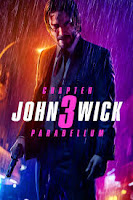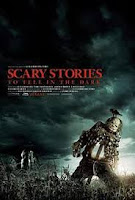- C.A.M.S. (Camera Angles, Movements, and Shots)- The common camera angles and shots are wide-angle, establishing shot, long shot, medium shot, close-up, extreme close-up, two-shot, and over-the-shoulder. The common camera movements are dolly zoom or vertigo shot and a single take shot.
- Mise-En-Scene C.L.A.M.P.S-
Lighting: Dim lighting is often used in action films due to the nature of the film. Towards the end where the resolution of the plot appears bright lighting is often seen; this symbolizes a better future.
Actors: The good guys/ protagonists are usually men who are brawny, strong and confident. On the other hand, the antagonist/ villain is usually the same, however, they are malicious.
Makeup: Typical makeup used in action films are bruises, cuts, blood, and sweat.
Props: Getaway cars, knives, guns, bombs, big vehicles, helicopters, and planes.
Setting: Common locations are places that are very populated such as urban areas, and popular countries such as America and England. By using popular places, the producer is able to attract an audience through familiarity.
- Common Editing- Cross-cutting, jump cut, cutaway editing, establishing shot, eyeline match, fade to black, and straight cuts.
- Common Elements of Action Genre- Fighting, stunts, car chases or explosions, take precedence over elements like characterization or complex plotting. The action typically involves individual efforts on the part of the hero, in contrast with most war films.
- Examples of Action Films-



- Common Sound Effects- Crowds, War sounds, Vehicles (skitting), Trains, Static sounds, Explosions, Sirens, Guns, Screams, and Monster sounds.
- Elements We Like/Dislike- This genre is liked because we like impressive fight scenes with special effect explosions. The elements of this genre that do not appeal to us are the lack of plotline and character development.
- C.A.M.S. (Camera Angles, Movements, and Shots)- The common camera angles and shots are high angles, close up, tracking or panning shot, reverse, tilted angle, (extreme)long shot, low angles, handheld shot, point of view shot, zoom, and over the shoulder shot. The common camera movements are dolly zoom or vertigo shot and a single take shot.
- Mise-En-Scene C.L.A.M.P.S-
Lighting is gloomy, silhouette lighting, harsh lighting, and dark.
Actors are usually young and very naive.
Makeup is white or pale skin, and dark under the eyes. There would be fake blood or stitches over the body.
Props are typically knives, guns, fake blood, television, baby carriage, doll, chainsaw, video camera, ouija board, and masks.
Settings are haunted houses, cabin, hotel, hospitals, asylums, graveyards/cemetery, schools, carnivals, and woods.
- Editing- Cross-cutting, jump cut, cutaway editing, establishing shot, eyeline match, fade to black, and straight cuts.
- Elements of Horror Genre- The common elements are fear of death, the dark, creepy and crawly things, scary places, disfigurement, dismemberment, suspense (anticipation and expectations), spooky music.
- Examples of Horror Films-
- Common Sound Effects- Ghosts, monsters, witches, screams, evil laughter, heartbeat, creaks, howls, chainsaw, splats, and the wind blowing.
- Elements We Like/Dislike- This genre is liked because it shows fears while making the audience still give off feelings of anticipation. The elements of this genre that do not appeal to us are the jumpscares, gory scenes, and when you know what is going to happen next.



No comments:
Post a Comment